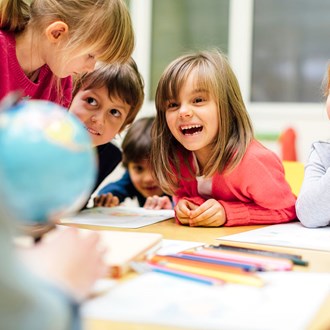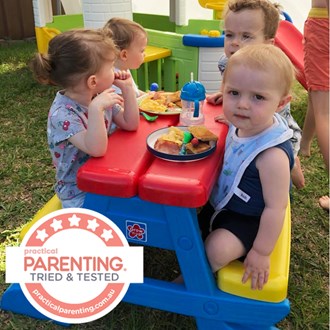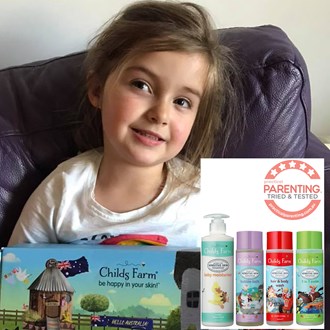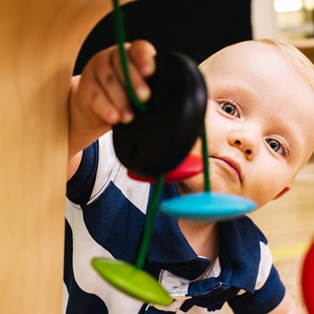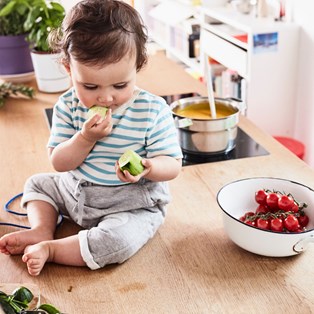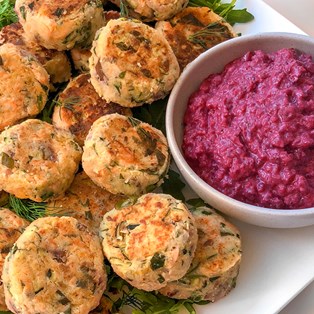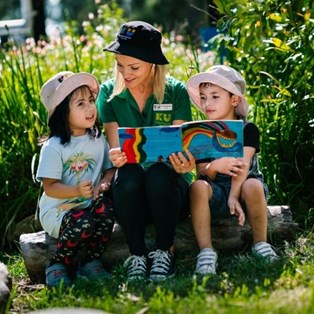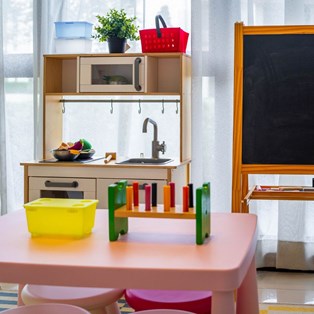“Why I Changed My Toddler's Childcare Centre”
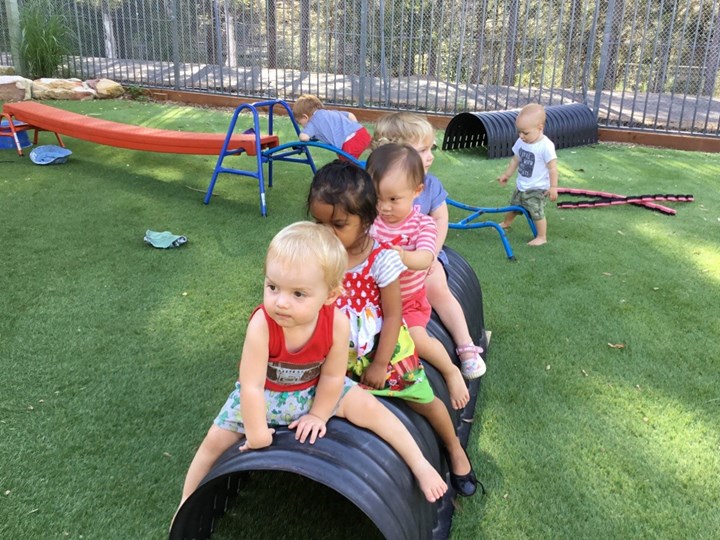
Franki Hobson for KU Children’s Services
Transferring a toddler from one childcare centre to another is never an easy decision for a parent to make. But after researching and writing ‘What makes a great childcare facility? The 5 most important questions to ask’ a few months ago, I knew I had to move my then 14-month-old toddler, Louis.
The early years of education build the foundation for a love of lifelong learning. But Louis had gone from being happy at drop-offs, to distressed, after his favourite carer had left. I hoped he’d settle once he bonded with new carers, but six weeks later he was still distressed. On top of that I had moved to a neighbouring suburb – and the thought of battling traffic each morning to take him to his ‘unhappy place’ broke my heart.
I knew I had to move him, but where to?
I visited three childcare centres in my new area and was extremely disappointed. They were dark. The staff hadn’t worked at the centres for very long. The spaces were small and unkempt. The vibe was just… flat.
Then I researched and wrote the story about KU Children’s Services and what to look for in a centre, and I was impressed. Their values, approach, philosophy, vision, educator qualifications, play-based learning programs, reputation, NQF ratings… this, as well as a KU centre being closer to my new home, provided the impetus I needed to make this positive change.
Louis was happy and thriving from day one at his new KU childcare centre. He started in February 2019 and was settled within weeks. He quickly bonded with the two fulltime educators in his baby to two year olds room and was learning so many new things - even in the first few weeks.
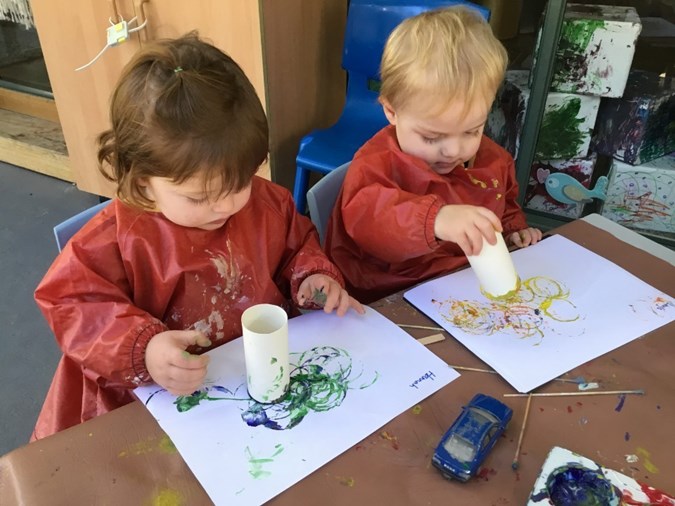
Here’s why I chose a KU centre over other centres and the positive difference we’ve seen:
1.Friendly and qualified educators
I know I mentioned this already, but having qualified educators who engage in intentional teaching and learning is so important. Childcare isn’t a babysitter while we parents work. It’s a place of learning and development for our little ones. KU has qualified, caring and highly skilled teachers and educators who have a professional commitment to providing high-quality early education to the children in their care. It’s FUN early learning!
2. Not-for-profit: KU’s values, reputation and five-star service
I’ve been told to get down from my moral high ground multiple times over the years. But when it comes to my children, I’m not going anywhere! Values, integrity, relationships… these things are important to me as an individual and as a parent. And I love that KU’s values are all about these, as well as childhood, leadership, innovation, diversity and inclusion, relationships and sustainability. KU is also a not-for-profit provider – so everything is done with the children’s and educators’ best interests in mind. And, as one of Australia’s largest (more than 140 centres) and longest-running childcare services, KU has a formidable reputation as a world-class leader in childcare and education. In fact, 99 per cent of KU centres meet or exceed the early childhood National Quality Standards.
3. Beep beep! Proximity
After a family separation, I moved a few suburbs away from where Louis’s previous childcare centre was. My morning peak-hour commute from home to Louis’s drop off, then to my older son, Maxwell’s, school, and finally my work, was 90 minutes each way (although only 20km in distance). Louis’s new centre is a 10-minute walk now! We not only save time in traffic, we also get exercise and fresh air walking him to childcare!
4. Learn through play: Louis is happier, learning and playing more
The most important reason of all… I almost cried with joy when Louis came home from KU in his second week attempting to sing ‘Ring a ring a rosy’ as I cooked his dinner. He was just 14 months old. He could barely speak! But he had the beat and rhythm right and motioned me to watch him, then he spun himself in a circle before the ‘…we all fall down’ finale, plummeting to the floor. I had never seen him do something so developmentally advanced - he was so excited and proud! I will forever remember the look on his face – his sense of accomplishment, showing me something he had learned, the happiness he had from singing and dancing. It was magic! And, as both a researcher and parent, I could see with my own eyes the importance of KU’s learning through play program. It works!
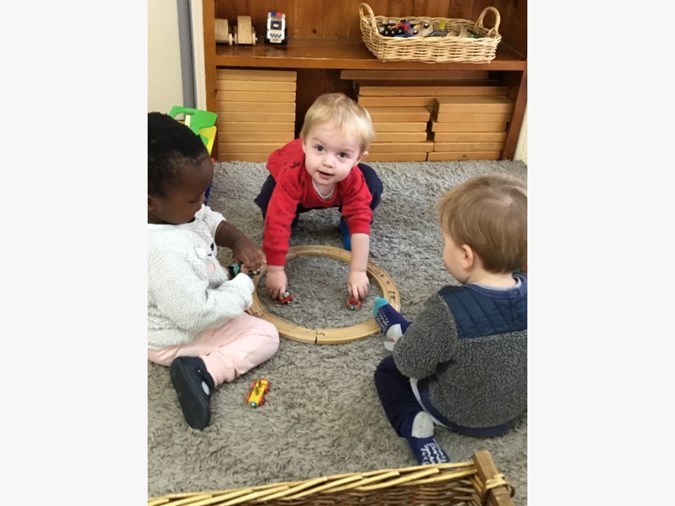
5. Clap along if you’re happy: The atmosphere
A happy vibe is contagious. Of course children will cry, but when I walk into Louis’s childcare centre, day after day, I see the educators caring for the children – whether that is comforting little ones after a parent has dropped them off, or just giving them a cuddle because they have woken in a daze. The carers engage with the children. They console, comfort, interact, laugh, sing, encourage, pretend play, dance and tell stories with enthusiasm. It is KU’s belief that children learn about their world through experiences provided in a nurturing and supportive environment. And you can see and feel this in the centre’s atmosphere – the educators genuinely care and they want to be there. And, consequently, the children thrive.
6. Rave-a-tots: They offer opportunities I don’t
I know this sounds bad, but I’m not much for physical play or music and singing. Although I didn’t realise this until I heard Louis singing, dancing and playing instruments, which he’d learned at childcare. Each afternoon his educators transform the nursery into a music room where the children play music, dance with disco ball lighting, twirl, shake maracas, rattle rice in bottles, sing songs and play with all kinds of sensory items (sheer fabrics while dancing, textured balls). The energy and vibe is incredible. I watched from a distance as Louis danced to flashing disco ball lights and twirled cloth through the air with his little friends. It’s heart-warming to know he’s able to experience different play, and be confident in his self-expression, when he’s at childcare.
7. Pint-sized play: The small group sizes
At Louis’s previous childcare he was in a room with about 25 babies and toddlers. At his new centre there are eight children in his room with two full-time carers. The smaller group size has had one of the most noticeable benefits to Louis’s development, learning, social, emotional and bonding experiences. KU provides play-based programs designed to be flexible, recognising that each child develops at their own pace, and it’s much easier for educators to monitor with smaller group sizes.
8. Let’s build sandcastles! Sunshiny days
For some, outdoor play might not be a big deal. But for me, living in inner-city Sydney, outdoor space is a luxury. So the playground at KU was a big drawcard for me. Louis’s previous centre had a sunroom that mimicked an outdoor space, with AstroTurf and a sandpit, but nothing can replicate fresh air, the sounds of birds chirping, the moon, puffy clouds and blue skies. Louis’s new centre had recently revamped its outdoor playground. It had balance beams, plants to water, drawing tables, a little bridge, a garden with bark and flower beds, an eating area and, of course, lots of shade!
KU has high-quality, well-rounded, play-based learning programs and educational experiences. The children have time when they are free to play and explore, to use their initiative, fantasy or role play, learn from other children, parallel play, socialise… as well as intentional learning with educators (guided play).

9. Cabin fever-proof! Rainy day indoor play
I get cabin fever when I’m stuck inside all day and it’s raining. It’s different at KU though – the educators reinvent spaces for role play, sensory experiences, art and craft using textural objects such as plants and leaves while learning about nature, painting, play doh, puzzles, building and construction zones, quiet corners for reading, cubby houses to hide in, play zones to role play and more.
10. Respecting one another: Cultural inclusion
Religions, customs, traditions…. I didn’t really grow up with any of these. And perhaps this is why I love learning about other people’s culture and traditions so much. At KU, Louis learns about the other children’s celebrations, customs, countries, heritage and beliefs. It’s an ‘inclusive’ approach, rather than ‘exclusive’.
Each centre has a rich tapestry of educationally interactive experiences for children, exploring an area of specialisation that brings the community together and enhances the space where children are supported to be their own unique selves, growing and developing a sense of belonging and empowerment. I love that during NAIDOC Week Louis participated in a range of activities to recognise and celebrate indigenous traditions. And I especially love Louis’s painting, which featured the indigenous flag’s red and yellow colours with gumnuts adhered to it, and the Mothers’ Day photo and card he made for me, complete with his handprint.
11. Please, thank you, you’re welcome! Social learning and development
It’s always a bonus when someone else can teach your children the tricky stuff… like sitting at the table to eat meals, washing their hands before and after eating, and manners…!
12. Fussy-toddler proof: On-site meal preparation
I’m ridiculously pedantic about serving my children fresh vegetables and protein every day… and lordy me are they bored beyond despair by my simple meals! So I LOVE that KU’s on-site cook whips up healthy, interesting, fresh and diverse flavours daily. Breakfast, lunch, afternoon teas… Woo hoo! That is an enormous amount of mummy-guilt gone, right there.
On Louis’ first day, the cook introduced herself to me and asked what types of foods Louis enjoyed, so she could make him feel more at home in those early days. I was so overwhelmed by her hospitality – can you imagine preparing meals for all those diverse palates and offering to create meals Louis would enjoy?
I’m thrilled he has a degustation of foods to try at childcare. He eats a whole load of foods I’d never have considered serving up - cucumber and carrot sticks for snacks, cauliflower (something I don’t normally cook at home)… foods rich in nutrients, as well as interesting flavours mixed together to accommodate multicultural tastes.
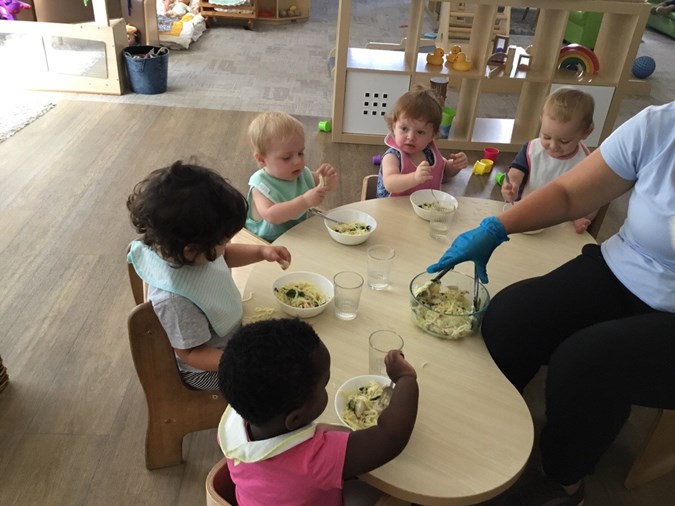
So did I make the right choice moving Louis to a new centre?
Absolutely. So many people told me I’d feel the KU difference once I’d experienced it. I am thrilled with our decision to move him to KU and now I totally ‘get’ the difference a great childcare facility can make – emotionally, socially and in terms of Louis’ general daily happy-factor.

Franki Hobson is a women’s lifestyle journalist and editor with more than twenty years’ experience. Her areas of expertise include parenting and health and well-being. Franki has two gorgeous boys, Maxwell, 10, and Louis, 1 ½.


